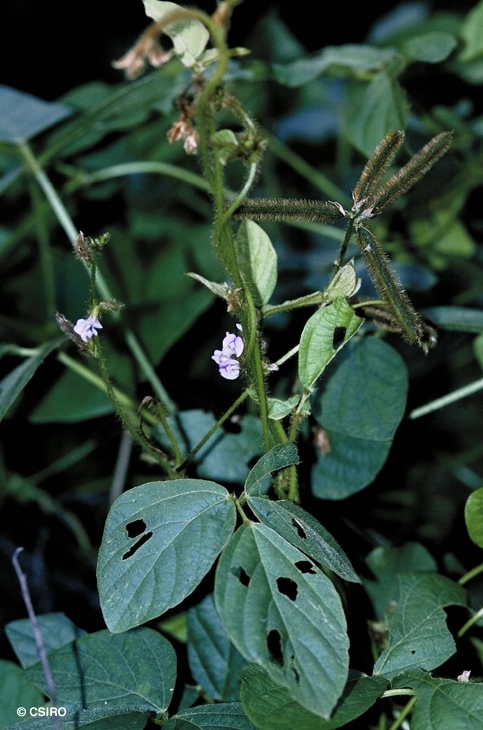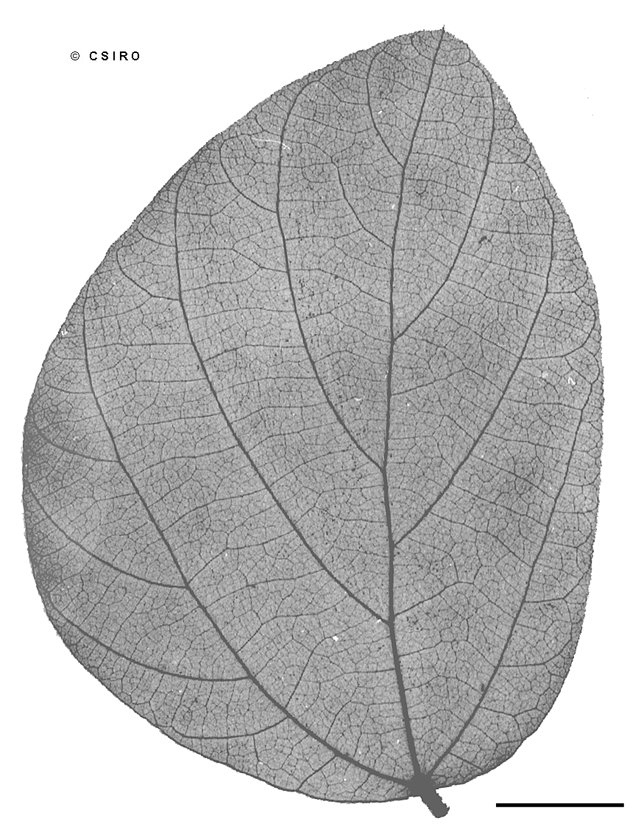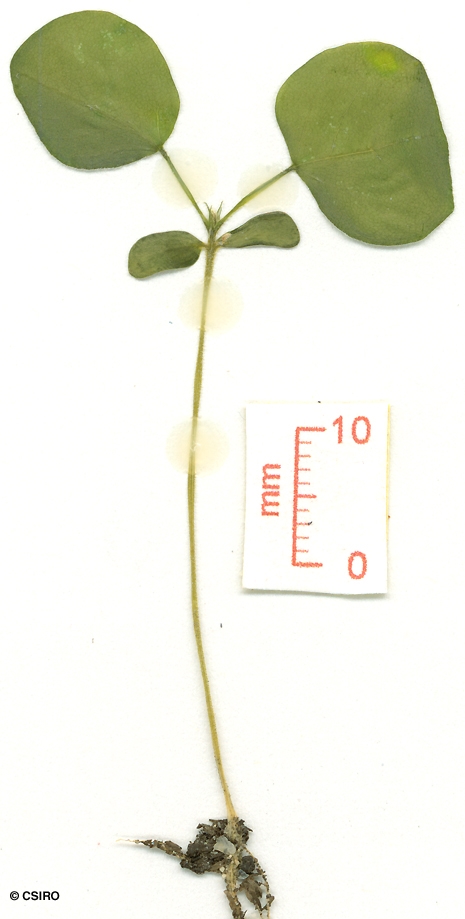Australian Tropical Rainforest Plants - Online edition
Calopogonium mucunoides Desv.






Desvaux, N.A. (1826) Annales des Sciences Naturelles 9: 423. Type: Hab. in Guiana?.
Calopo
A slender vine not exceeding a stem diameter of 2 cm.
Leaflet blades about 3.5-9 x 3-6 cm, lateral leaflet stalks about 3 mm long, middle leaflet stalk about 8-12 mm long. Lateral leaflet blades oblique at the base, upper and lower surfaces of the leaflet blades clothed in pale prostrate hairs. Lateral veins about 3 or 4 on each side of the midrib. Compound leaf petiole about 5.5-8.5 cm long. Stems, twigs and compound leaf petioles clothed in erect brown hairs. Stipules hairy, triangular, about 3-5 mm long. Stipels linear, about 3 mm long.
Flowers in clusters at irregular intervals on a long inflorescence axis. Bracts present at the base of each flower, each bract about 5-6 mm long. Calyx tube about 2 mm long, lobes filiform to narrowly triangular, about 4-5 mm long. All parts of the calyx clothed in long (2 mm) brown hairs. Petals: standard about 8-9 mm long with a green spot near the centre, otherwise pale bluish purple; wings about 8 x 2 mm; keel about 5 mm long. Stamens 10. The filaments of nine stamens fused to form a tube open on one side. Free part of the filaments about 2 mm long. One stamen free. Ovary densely hairy. Stigma terminal, +/- globular.
Cotyledons slightly asymmetrical, thick and fleshy, +/- oblong, widest at the apex, about 6.5-7.5 x 3-3.5 mm. Venation obvious below, barely visible on the upper surface. Hypocotyl hairy. First leaves glabrous, +/- orbicular, apex +/- obtuse, base shallowly cordate. Pulvinus and stipels present. Third leaf trifoliolate. At the tenth leaf stage: leaflet blades penniveined with about 4-5 veins on each side of the midrib. Stipels hairy, linear, about 3 mm long. Stipules ovate about 4-5 mm long, clothed in long, pale brown hairs. Seed germination time 14 days.
An introduced species originally from tropical America, now naturalised in NT, CYP, NEQ and CEQ. Altitudinal range probably not great, from near sea level to 200 m(?). Grows in disturbed areas such as roads through rain forest. Also naturalised in New Guinea and other parts of Malesia and the Pacific islands.
A productive and high-yielding species introduced as a pasture legume for the wet tropics but not readily eaten by cattle while green; more palatable in the fry season. May become a weed in cane fields. Hacker (1990).





